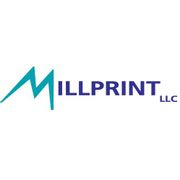
Many business owners put too much focus on the aesthetics of their business flyers rather than the functionality. Choosing a wispy font that’s difficult to read, for example, can make your flyer useless to the recipient, which is why it’s important to follow best business printing practices. Below is a helpful guide for choosing the perfect font.
Why Is the Font Important?
Fonts are text designs that can be used on business flyers or for other business printing projects. Some are wavy and artistic, while others are bold and minimalist. Each can play a role in branding and messaging so long as it’s legible.
A cursive font, for example, can create elegance. Too much, however, will be a burden to read. A clean, powerful font may build trust and capture attention, though it can be overpowering if paired with small text or used too often. The right font will fit your brand, attract your audience, and be fast and easy to digest.
What Are Popular Fonts for Flyers?
There are many fonts to explore, and it’s always safe to start with favorites. Helvetica is modern, easy to read, and sans-serif, meaning there are not small embellishments on the text. Georgia is similar, though it’s a serif font. Open Sans uses kerning—the space between letters—to create clean, readable text, and Verdana is a favorite for large blocks of copy.
If you’re creating a headline, try Nexa, a thick legible font, or Pluto, which uses small wave embellishments to create character.
What Other Factors Make the Flyer Easier to Read?
 Once you’ve picked a font, you need to use a creative strategy. Make sure the font isn’t too small because it will be difficult to read. Anything below a 10-point size will cause the reader to squint. You don’t want the font to take up too much space, however. It’s generally best to use an 18- to 28-point font for headlines and a 10- to 14-point font for body text.
Once you’ve picked a font, you need to use a creative strategy. Make sure the font isn’t too small because it will be difficult to read. Anything below a 10-point size will cause the reader to squint. You don’t want the font to take up too much space, however. It’s generally best to use an 18- to 28-point font for headlines and a 10- to 14-point font for body text.
Color can also impact legibility. Cyan, yellow, green, and magenta are recommended if you need text to stand out, whereas purple, blue, and red can be harsh on the eyes. Black text is always safe on a white background; for the best results, compare colors on a color wheel. Sticking to complementary colors is a safe way to maximize design potential and readability. This handy online tool helps you check your color choices: https://www.sessions.edu/color-calculator/.
The text needs to be placed carefully. It can be stacked on either margin or in the middle, but make sure it’s consistent throughout. It’s wise to leave an inch-wide margin on all sides of the flyer because text too close to the edge will make the design appear off-balance.
A business printing service will help you create memorable products, and residents of Cincinnati, OH, turn to Millprint LLC for all their printing needs. This printing company is backed by 20 years of experience and creates a wide selection of products, including business cards, signs and posters, pamphlets, and announcements. You can explore all their digital printing services on their website or call (513) 489-3000 to discuss an upcoming project.
About the Business
Have a question? Ask the experts!
Send your question

